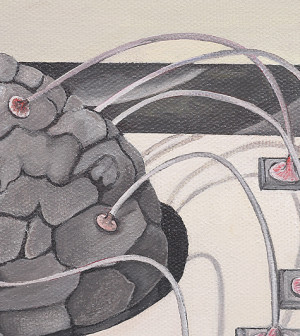- Tips for Spending Holiday Time With Family Members Who Live with Dementia
- Tainted Cucumbers Now Linked to 100 Salmonella Cases in 23 States
- Check Your Pantry, Lay’s Classic Potato Chips Recalled Due to Milk Allergy Risk
- Norovirus Sickens Hundreds on Three Cruise Ships: CDC
- Not Just Blabber: What Baby’s First Vocalizations and Coos Can Tell Us
- What’s the Link Between Memory Problems and Sexism?
- Supreme Court to Decide on South Carolina’s Bid to Cut Funding for Planned Parenthood
- Antibiotics Do Not Increase Risks for Cognitive Decline, Dementia in Older Adults, New Data Says
- A New Way to Treat Sjögren’s Disease? Researchers Are Hopeful
- Some Abortion Pill Users Surprised By Pain, Study Says
Human-Type Epilepsy Discovered in Sea Lions


When exposed to a certain toxin in algae, sea lions develop a form of epilepsy similar to that in people, a new study says.
Domoic acid — which can cause tremors, convulsions, memory loss and death — is produced by algae blooms and accumulates in small fish that sea lions eat. Every year, hundreds of sea lions affected by domoic acid are washed up along the California coast.
Researchers examined the brains of 14 dead sea lions that had epilepsy caused by domoic acid and compared them to the brains of nine sea lions that died from other causes. The sea lions with epilepsy had about 50 percent fewer neurons in the hippocampus (the brain’s memory center) than the other sea lions.
“We found there was a loss of neurons in specific patterns that closely matched what is found in people. And there is synaptic reorganization — a rewiring of surviving neurons. This also matches what is found in humans with temporal lobe epilepsy,” study lead author Paul Buckmaster, a professor of comparative medicine at Stanford University, said in a university news release.
The investigators also found that in most of the sea lions with epilepsy, the hippocampus on only one side of the brain was damaged.
“That was really surprising. That is what you find in people — 80 percent of the time the damage is just on one side,” Buckmaster said.
The study appears online March 19 in the Journal of Comparative Neurology.
Further research in sea lions could lead to the development of better treatments for both sea lions and humans, according to Buckmaster.
Temporal lobe epilepsy is one of the most common types of epilepsy in people and has no cure.
More information
The American Academy of Family Physicians has more about epilepsy.
Source: HealthDay
Copyright © 2024 HealthDay. All rights reserved.










